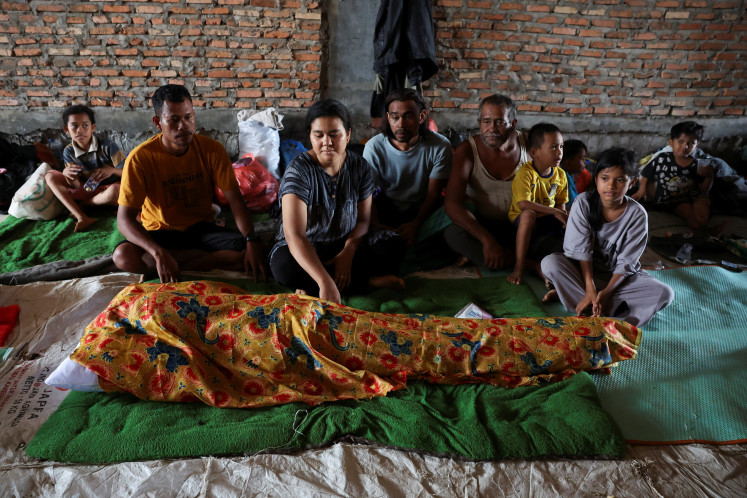Popular Reads
Top Results
Can't find what you're looking for?
View all search resultsPopular Reads
Top Results
Can't find what you're looking for?
View all search resultsRI middle-class households grow richer: BI survey
(JP) Indonesia’s booming economy has turned middle-class households richer, with increases in net worth, assets, income and ability to repay loans, Bank Indonesia (BI) latest survey shows
Change text size
Gift Premium Articles
to Anyone
(JP)
Indonesia’s booming economy has turned middle-class households richer, with increases in net worth, assets, income and ability to repay loans, Bank Indonesia (BI) latest survey shows.
The 2011 survey also found that the middle class comprises 60.9 percent of Indonesians, while the low income segment with a net income of below Rp 20.4 million (US$2,162) per year was 22.1 percent of the population and the remaining 17 percent were those who have high income of more than Rp 65.6 million.
“Households’ growth is driven by improving overall economic growth and manageable inflation. High GDP [gross domestic product] creates economic potential for the people,” said Yunita Resmi Sari, deputy director of BI’s banking research and regulation department.
“Improving household conditions also triggered consumption and therefore spurred economic activities,” she added.
Southeast Asia’s largest economy is more than 50 percent driven by domestic consumption, and therefore stable prices are key to maintaining the over 6 percent economic growth seen since two years ago. Last year, inflation turned lower at 3.8 percent, versus almost 7 percent in 2010.
Weaker inflation has lowered operational costs for households by 2.5 percent throughout last year, according to the BI survey. With lower costs and 14.7 percent higher gross income, Indonesian households saw their net income soaring by 80.8 percent last year to an average of Rp 11.8 million.
Household disposable income also rose 12.9 percent to an average of Rp 37.7 million throughout 2011.
“The increase in household income in 2011 was primarily driven by a 46 percent increase in production activities. Meanwhile, investment activities gained in 2011 compared with losses in 2010,” Yunita said, adding that household investment returned 36.3 percent last year to Rp 527,971.
Other than production activities, which account for 15 percent of overall household income, the increase in income was primarily supported by the service sector, contributing 58.5 percent. Income from trading activities account for 20.8 percent of overall Indonesian households income.
The improving conditions of Indonesian household finances has brought up overall assets and net worth by 14 percent to an average of about Rp 200 million each in 2011. Cash positions also soared 80.2 percent to Rp 16 million, boosting households savings.
“Higher savings has also strengthened the financing source for development,” Yunita said.
But still, more than half of Indonesian households still do not have access to savings and loans at financial institutions, according to the central bank, which surveyed 4,095 households in big cities in Java, Sumatra, Kalimantan, Sulawesi and Bali.
“There’s a large untapped market for banks in Indonesia in terms of savings and loans,” Bank Mandiri chief economist Destry Damayanti said.
The ratio of household total debt to total assets was only at 3.3 percent last year, down from 3.6 percent in 2010, indicating that almost all of household assets were funded not by debt, but by people’s own incomes, according to BI survey.
Meanwhile, the ability of Indonesian households to repay their loan was high given strong cash conditions, with an assets-to-short-term-debt ratio of almost 22 times.
“That’s why Bank Mandiri and many banks are now strategizing on tapping into the retail segment,” Destry added.
“Now, we need to ensure that the strong economic growth is also felt by the low income segment,” World Bank senior economist for Indonesia Vivi Alatas said.











